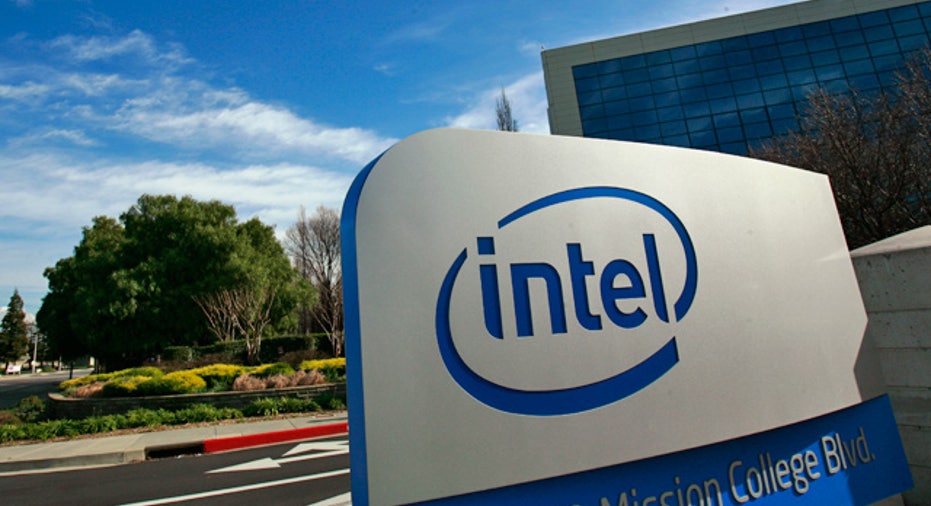Analysis: Watch Out ARM, Here Comes Intel

SAN FRANCISCO – Intel's latest manufacturing breakthrough sends a clear warning to rival ARM Holdings not to get too complacent with its overwhelming lead in the red-hot mobile arena.
But although hailed by Intel as an unprecedented advance in performance and power reduction, its new three-dimensional chip process hardly ensures it can make headway in a market lorded over by its British rival.
"This gives Intel a big advantage over the ARM ecosystem but they have to serve up the right products to capitalize on it," said Real World Technologies analyst David Kanter. "Intel has to do more to develop its ecosystem because it's swimming against the tide."
Before Intel unveiled the technology Wednesday, ARM's London-traded shares slid more than 7 percent on fears the Cambridge-based firm would lose some of its comfortable lead, although they rebounded 1.6 percent in the following session.
Intel has the most advanced semiconductor manufacturing technology in the world. For decades it has used that lead to make high-performance processors for PCs, and only just begun to turn that advantage toward making smaller and more efficient chips for a new crop of powerful mobile devices.
Its newest breakthrough is a reflection of Intel's ages-old strategy of investing heavily to stay ahead of competitors.
The new "Tri-Gate" technology flips flat chip design on its side -- thereby making it "3D" -- an approach considered but not yet implemented by Intel rivals like Samsung, GlobalFoundries, and Taiwan's TSMC.
Importantly, it allows Intel to keep doubling the number of transistors on a chip every two years -- the so-called Moore's Law that underpins the company's success.
To challenge ARM and get into the mobile space, Tri-Gate is a step in the right direction. Intel claims it delivers as much as a 37 percent jump in performance while consuming less electricity -- a key selling point for its rival.
The first 22 nanometer "Ivy Bridge" chips to roll out of Intel's plants this year will be aimed at PCs, with its "Atom" mobile processors following further down the road.
"If they can get timing right, and execution, there's a possibility to make inroads," Kanter said. "But then there's the software and you have to have the right hardware and peripherals."
SHARES SHUNNED FOR MONTHS
ARM's power-sipping architecture is used by Qualcomm, Texas Instruments, Nvidia and Samsung in processors in tablets and smartphones.
Its chips are the industry standard for Apple's mobile gadgets and other devices running Google's Android operating system, a trend Intel will find increasingly difficult to reverse as time goes on.
Even longtime Intel ally Microsoft bowed to market pressures, announcing in January it would make its Windows software compatible with ARM designs -- an admission that computing was moving away from the desktop.
For months, investors have shunned shares of Intel, now trading at just 10 times expected annual earnings, on fears PCs will be replaced by tablets as consumers' preferred gadgets. But some still argue the stock is oversold.
"They at least deserve some nod that they could enter that market," said Pat Becker Jr, a principal at Becker Capital Management in Portland who owns stock in Intel.
Some industry experts say ARM better watch out. Intel, with deep pockets to pay for research and development, may yet become a serious competitor in mobile devices as it continues to adjust its thrust toward energy-efficient processors.
Its new manufacturing technology is estimated to be between one and three years ahead of competitors like TSMC.
Intel, whose core business is making processors for PCs, recently boosted its capital spending plan for 2011 to $10.2 billion from $9 billion to create more capacity at its cutting-edge plants, which should help it start using its best technology to make mobile chips sooner.
Executive Vice President Dadi Perlmutter acknowledged to reporters on Wednesday that improved manufacturing is only one of many factors Intel must address to compete in mobile chips.
Operating systems and other software, as well as hardware like touchscreens and sensors, would have to be made compatible with Intel chips before manufacturers become willing to gamble on them for their top-of-the-line tablets and smartphones.
"The competition is moving extremely fast so Intel's announcement doesn't guarantee anything," said Davenport analyst Drake Johnstone. "Once they get out the Atom processor for tablets and smartphones, it is competitive and they can make some inroads. But it's not a sure thing."



















